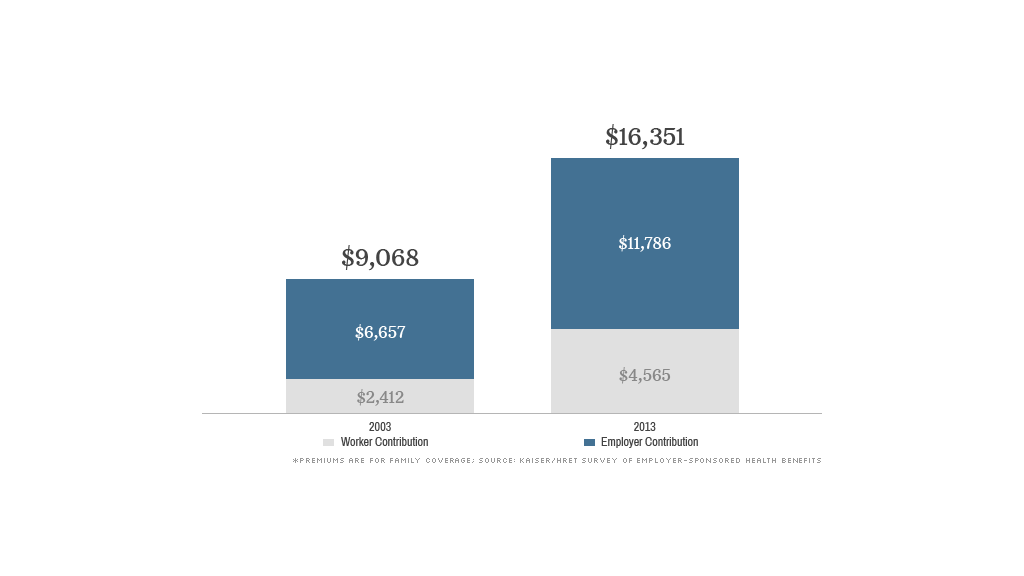
Employees are contributing nearly 6% more for health insurance for their families in 2013, more than three times the increase in workers' wages.
Workers are shelling out an average of $4,565 for their employer-sponsored family health coverage this year, according to the annual survey conducted by the Kaiser Family Foundation and the Health Research & Educational Trust.
For individual coverage, they pay $999, up 5% from a year earlier.
Still, workers pay only a fraction of the overall cost. They shell out only 28% of the total price for family insurance, while their employer foots the rest of the bill. Individuals pay an even smaller share -- 17% for single coverage.
Total costs for health care, including both the workers' and the employers' shares, rose at a more modest pace of 4% for families. For individuals, they rose in tandem, according to the survey.
While health insurance costs have been rising more slowly in recent years, so have wages. Workers saw their incomes rise by only 1.8% over the last year.
"People still feel the pain of health care costs and worry about paying health care bills," said Drew Altman, Kaiser's chief executive.
Still, this year's premium increase was the second lowest since Kaiser/HRET began conducting the survey in 1999. A decade ago, increases of more than 9% a year were common.
The main reason for the slowdown is the weak economy, Altman said. Americans restrict their spending on health care when the national economy and their financial situations are shaky.
"We are in a prolonged period of moderation in premiums, which should create some breathing room for the private sector to try to reduce costs without cutting back benefits for workers," said Altman.
Related: Who's the killer employee under Obamacare? No. 50 or 51?
But companies are still passing along more costs to workers. About 78% of all covered workers face an annual deductible, up from 72% last year. The average deductible for single coverage rose only a tiny bit to $1,135 since 2012, but the change in recent years is more pronounced. In 2009, the annual deductible was only $826.
Employers are also trying to control costs by offering wellness programs. Some 26% of large firms with more than 200 workers and 10% of smaller firms have a wellness program, with the most popular being flu shots and vaccinations.

Health insurance costs and availability vary widely by size of firm and share of low-wage workers within the company.
Among companies with 50 or more workers, 93% offer health benefits. Firms of this size will have to provide affordable insurance to workers starting in 2015, under the Affordable Care Act.
Only 57% of smaller firms provide their workers with health insurance. Workers at smaller firms also have to pay more for family coverage than their peers at bigger employers, though they contribute less for individual insurance.
How many low-wage workers are employed at a company also affects premiums levels. The Kaiser study found that employees had to contribute $5,818 at firms with many low wage workers, as opposed to $4,030 at firms with higher-paid staff. The employer contribution at firms with lower-paid workers was also smaller.
The upcoming implementation of state-based exchanges should not have a major effect on employer-sponsored premiums, according to Kaiser. These exchanges are a key Obamacare program that allows those without group coverage to buy insurance.
Two years ago, premiums soared after several Obamacare provisions, including allowing parents to add dependents up to age 26 onto their plan and free preventive care, kicked in.


